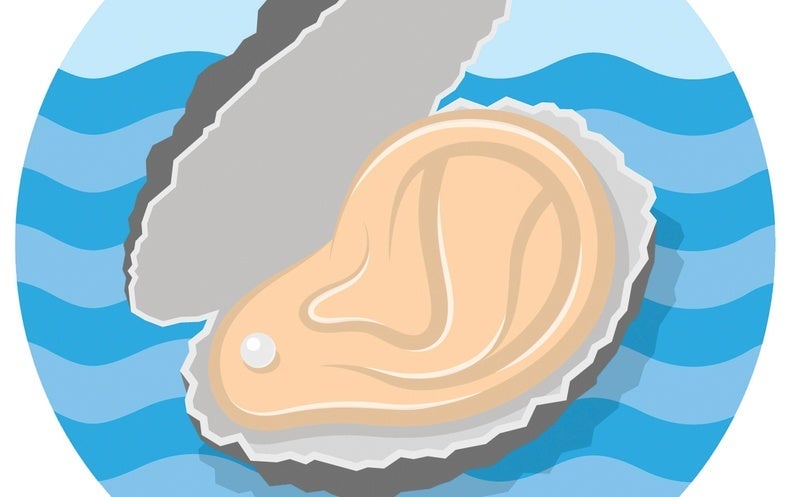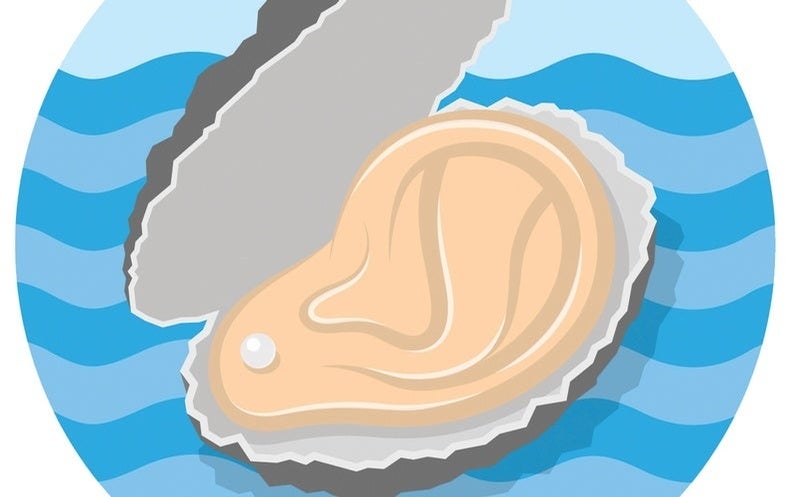
Oyster reefs once carpeted much of the seafloor, filtering water, stabilizing shorelines and providing habitats for a vast array of life. But in the past 200 years net-dragging fishing boats have destroyed most of these reefs around the world. Now, in the Journal of Applied Ecology, researchers at Australia’s University of Adelaide reveal a curious fact that may help rebuild such formations: baby oysters follow the sounds of shrimp.
Australian flat oysters’ microscopic larvae drift in currents and swim with hairlike cilia, searching for a hard surface—ideally a thriving reef made of shells from other oysters—to cement themselves to for the rest of their lives. If no established reef is nearby, the babies float aimlessly over the sandy seafloor; only a lucky few find homes on stray rocks. Conservation scientists have tried to start new reefs by introducing limestone boulders for larvae to settle on, but most remain lost at sea.
Previous studies demonstrated that other sea creatures can navigate toward the sounds of healthy ecosystems—sounds that have become increasingly rare as reefs fall silent and ships dominate the ocean soundscape. Oysters lack ears but sense sound vibrations, so the team wondered if the larvae could follow a sonic beacon of their own: the crackle of snapping shrimp.
These reef-dwelling creatures snap their claws to unleash jets of water that stun prey, producing a staticky-sounding, 210-decibel cacophony—as loud as a rock concert. In their laboratory and in an ocean experiment, the scientists found that oyster larvae navigated toward recorded shrimp sounds and settled on hard surfaces nearby. Larvae had difficulty locating those surfaces without the sounds playing or with boat noise disrupting them.
The researchers say luring oyster larvae to potential reef sites could offer an alternative to expensive, labor-intensive measures such as sending divers to ferry larvae to their new homes. “There is a cost and effort in raising oysters,” notes marine scientist Terry Palmer of Texas A&M University–Corpus Christi, who works on oyster conservation but was not involved with the study. He says the new method might be useful in conjunction with providing surfaces for reef building, especially in areas with relatively few of the animals.
And this sound technique might eventually help more than just oysters. “They’re really the building blocks of the southern reefs,” says University of Adelaide marine biologist Brittany Williams, the study’s lead author. Where oysters go, more life will follow. And although tricking larvae into settling on a lifeless reef might seem like a cruel bait and switch, rest assured: the plankton and algae that oysters eat are nearly omnipresent in the water, so the bivalve trailblazers won’t starve while they wait for the rest of the reef community to arrive.

























































